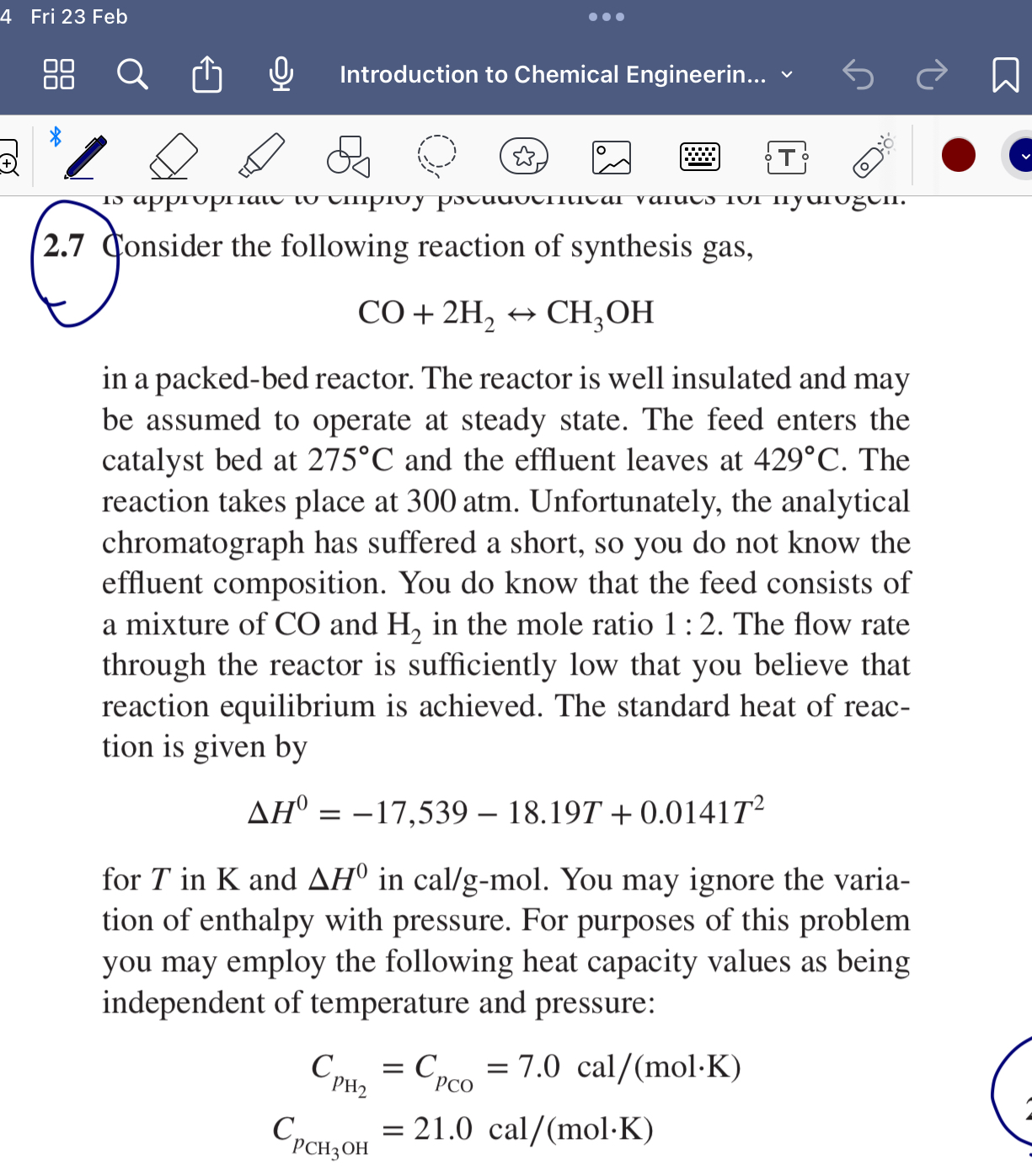Answered step by step
Verified Expert Solution
Question
1 Approved Answer
2 . 7 Consider the following reaction of synthesis gas, C O + 2 H 2 h a r r C H 3 O H
Consider the following reaction of synthesis gas,
in a packedbed reactor. The reactor is well insulated and may
be assumed to operate at steady state. The feed enters the
catalyst bed at and the effluent leaves at The
reaction takes place at atm. Unfortunately, the analytical
chromatograph has suffered a short, so you do not know the
effluent composition. You do know that the feed consists of
a mixture of and in the mole ratio : The flow rate
through the reactor is sufficiently low that you believe that
reaction equilibrium is achieved. The standard heat of reac
tion is given by
for in and in calgmol. You may ignore the varia
tion of enthalpy with pressure. For purposes of this problem
you may employ the following heat capacity values as being
independent of temperature and pressure:
a What are your best estimates of the effluent composition
and the equilibrium constant for this reaction? Use
only the information above, the assumption of ideal solu
tion behavior, and the fact that the fugacity coefficients
for and at the temperature and
total pressure in question are and
respectively. Calculate relative to standard states
of unit fugacity for all species. Clearly state any other
assumptions that you make.
b Note: You may not use the information contained in part
b to solve part a Results of a previous study indicate
that at and atm, the standard Gibbs free energy
of reaction relative to standard states of unit fugacity is
Are the results you obtain in part a rea
sonably consistent with this value? For your calculations
you may neglect the variation of with temperature
over the range to by employing an average
value ie evaluate at and presume it to be a
constant

Step by Step Solution
There are 3 Steps involved in it
Step: 1

Get Instant Access to Expert-Tailored Solutions
See step-by-step solutions with expert insights and AI powered tools for academic success
Step: 2

Step: 3

Ace Your Homework with AI
Get the answers you need in no time with our AI-driven, step-by-step assistance
Get Started


